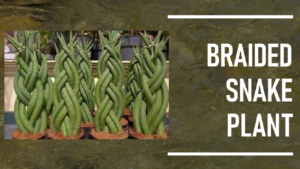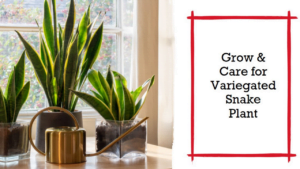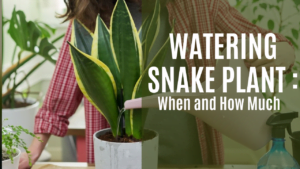The snake plant is well-known for its long green-colored striking leaves. It has yellow borders that give it an attractive charm.
This plant is also widely known as mother-in-law’s tongue and can survive in various environments.
Gardeners consider it “hard to kill the plant,” even if neglected occasionally. However, what if one day you noticed restricted growth and discolored leaves?
It may be due to the incorrect snake plant soil mixture or type. These plants may survive in various environments but won’t thrive well.
Snake plants can’t develop healthily if planted in thick, heavy, or soggy soil, so selecting a good-quality potting mix is essential. In this blog, I will tell you all you need to know and you will learn the step-by-step recipe to make the best snake plant potting mix for fuller growth.
Before that, what could be the possible signs that you are using the wrong snake plant soil mix? Let’s dive into the same.
Signs of using wrong soil mix for snake plant

As I already told you above, most snake plants forgive easily, even when you neglect their care. However, if you use dense soil that retains excessive moisture, you may notice some signs of poor snake plant health over some time.
Many plants grow incredibly well in ordinary soil. Although, this is not the same case with your potting mix for snake plants.
Snake plants naturally store water in their leaves and can survive for a long time without water. They despise sitting in water or being constantly wet. It can lead to root decay, hampering its growth.
Garden soil is also unsuitable for an indoor snake plant. If you are using it for your snake plant soil mix, you should keep an eye on any of these warning signs.
1) Restricted Growth
Generally, snake plants are moderate-growers. So, if you notice that it has suddenly stopped growing or isn’t growing as much as it did in previous years, it may be due to a lack of nutrients.
You should consider swapping your snake plant potting mix with a better one or topping off your pot with some fresh cactus soil.
2) Brown and mushy roots
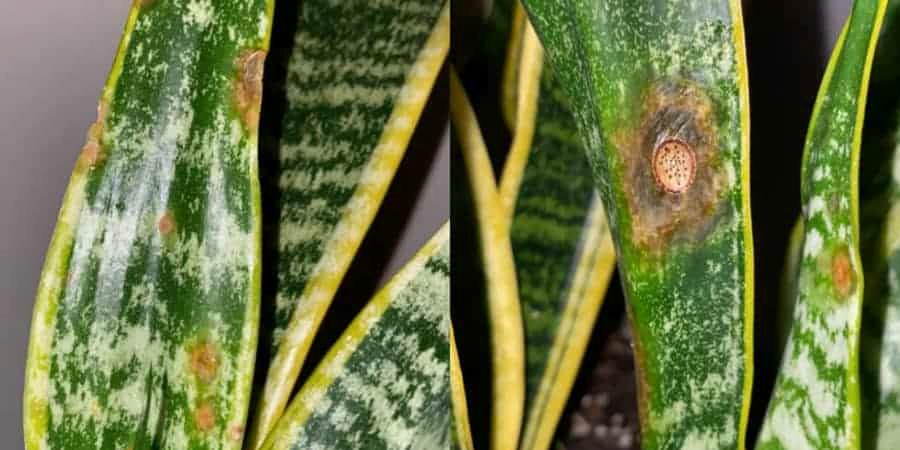
If you have overwatered your snake plant, it can result in brown and mushy roots. It can also lead to excessive root decay. A contaminated root ball is a significant issue that will kill your plant.
You should check on the plant’s roots if you find soggy soil and root balls popping up. Healthy roots are usually white. You should change the snake plant soil if they become brown and mushy.
3) Drooping or discolored leaves
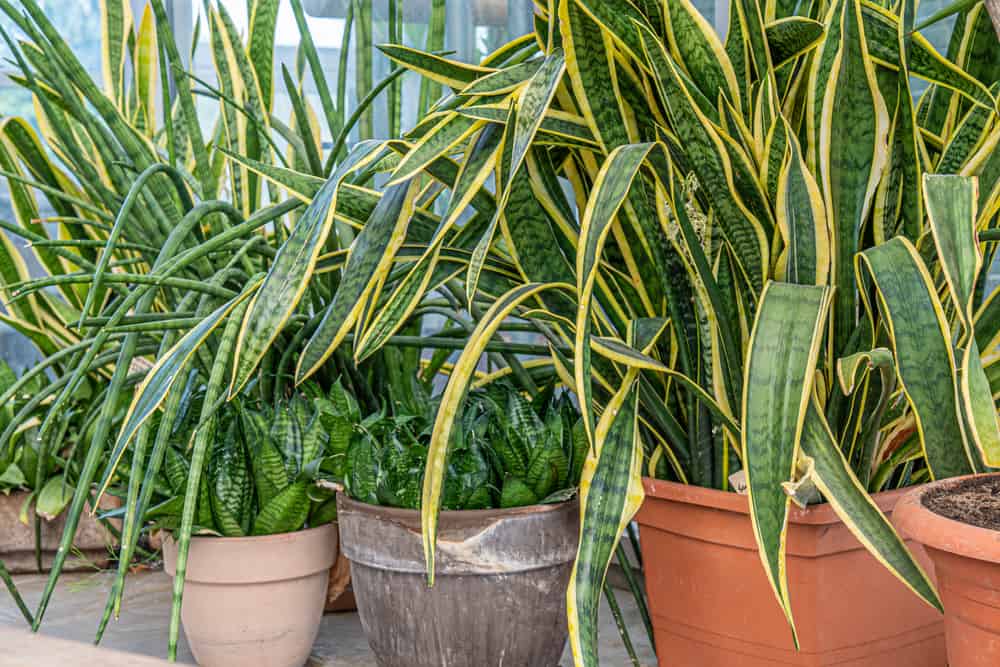
If your upright snake plant is drooping or the leaves are turning brown or yellow, your plant may get too wet due to poor soil potting. These are typical symptoms of overwatering, which is easy to do if your potting mix retains water.
Although other environmental factors could also cause these symptoms. Other problems that could impact snake plant’s health are:
- Excessive or insufficient watering.
- Too much or too little sunlight.
- A lack of nutrients.
- Temperature fluctuations.
You should evaluate all the conditions before concluding that the snake plant potting mix is the one to blame.
What makes a good snake plant soil mixture?
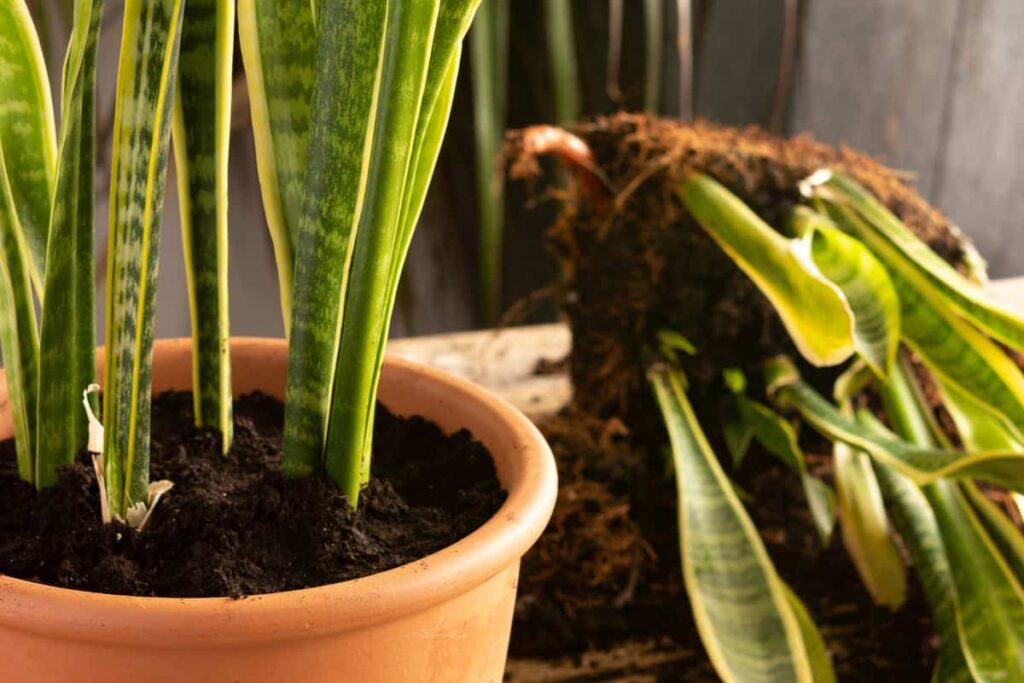
Snake plants belong to tropical western Africa. They grow well in a variety of light conditions, including full sun, indirect light, and low light.
Gardeners adore them due to their air-purifying quality, which removes harmful toxins from the air to an extent. However, this easygoing plant has specific soil requirements.
You cannot use an ordinary bag of garden soil as it may harm your snake plant. They are prone to overwatering and damage such as root rot, and having the proper soil mixture will result in healthy snake plants.
So, now I will tell you what factors you should consider while selecting the best soil for a snake plant.
1) Good Drainage
Snake plants are succulents that are related to cacti. They can store water in their thick green leaves.
So, they require well-draining soil. It makes them excellent container plants for your home. If there is poor drainage, these can become susceptible to root rot.
Snake plants dislike having “wet feet” sitting in water for a long period. You need to provide them with good drainage to avoid this problem. You can either buy a ready-made potting mix from our store or make your own for cactus or succulent plants.
Make sure your growing medium (pot or container) has enough drainage holes for water to pass through.
2) Aeration
The snake plant’s roots require air to breathe and be comfortable. If the soil is compacted, the snake plant’s roots will suffer. It can have a direct impact on a plant’s growth.
For snake plants, you should choose loose-packed soil that allows nutrients, air, and water to flow freely.
3) Nutrient-rich
Just like you and me, snake plants also need nutrients to grow well. They get essential nutrients from the soil they grow in. So if they don’t get the right nutrients, they will suffer.
In the growing season of snake plants, when the plant is actively growing, the best fertilizer for snake plants is a portion of all-purpose plant food.
However, they don’t require much fertilizer and will grow healthily without it. You can add materials like coconut coir, peat moss, and compost that add nutrients to the potting mix for snake plants but don’t add too much.
Now, without further delay, let’s get into the preparation of your snake plant soil mixture.
Worried about your Snake Plant?
Check these beautiful guides that my colleague and I wrote about Snake Plants Care. You’ll love it.
Snake Plant Soil: What Is The Best Soil For Snake Plant?
Is Snake Plant Poisonous to Cats & Dogs? What You Need to Know!
Pot for Snake Plant: How to Choose the Best Pot for Snake Plant?
Moonshine Snake Plant: How To Grow And Care!
How to make a potting mix for snake plant soil?
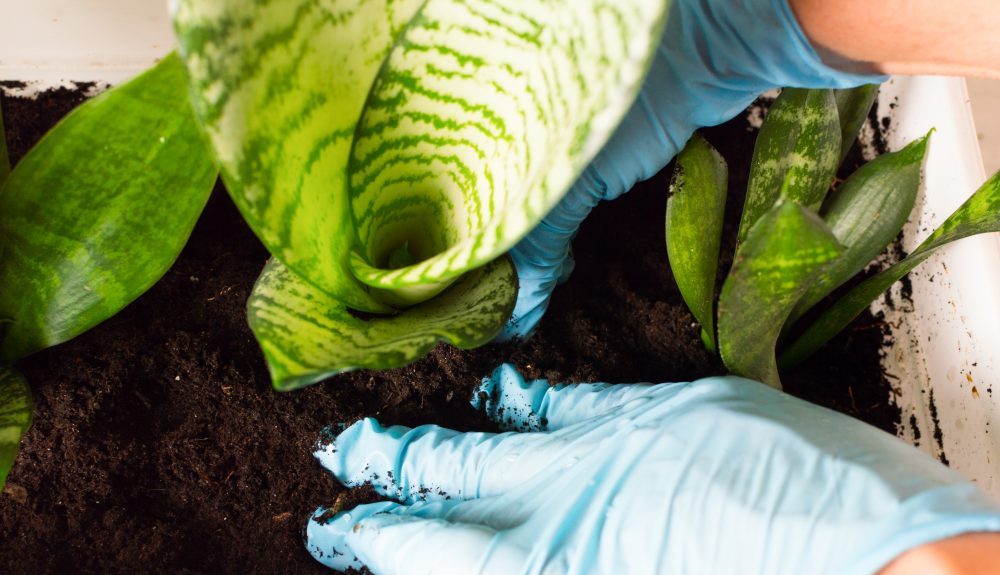
Snake plants are tough and adaptable, so make sure you make soil that suits that preference. If you want your plant to serve you with healthy green growth, It is critical to provide an appropriate snake plant soil mixture.
The potting mix for snake plants should be well-drained and full of nutrients. But wait a minute! Before we begin, remember that you should use various ingredients to create the best soil for a snake plant.
Furthermore, also evaluate the snake plant’s requirements as they may differ slightly depending on its location and environmental factors.
Ingredients for Snake Plant Soil Mix
You should use these essential ingredients to create an ideal soil mix for snake plants.
1) Potting Soil
It is the foundation base of your snake plant soil mix. You should pick something light and aerated in texture with organic and aged natural matter.
2) Sphagnum peat moss
It is made up of fine particles with a highly coarse texture. It can hold water and nutrients for a long time. Peat moss also has good aeration.
3) Coconut husks
It has a similar texture to peat but condenses more quickly.
4) Pine bark
These fine small fragments of coniferous trees like firs and pines. Pine barks contain a high percentage of lignin and retain their shape over time. As a result, it is excellent at resisting compaction and creates more air pockets.
5) Perlite
It is an example of an expanded rock. Pertile does not absorb water and is excellent for aeration and drainage in soil mixes.
Now that you know what each ingredient contributes to a potting mix for snake plants, I am sharing the recipe with you to try.
This snake plant soil mix contains:
- Perlite or coarse sand (1 part)
- Pine bark fines (1 part)
- Coco Coir (1 part)
- Potting Soil containing sphagnum peat moss (3 parts)
You should combine all the ingredients in a large container and moisten them with water. Do not make the soil soggy. Mix them thoroughly and add a layer to the bottom of your growing medium, i.e., pot. The snake plant’s root ball will sit just below the planter’s lip.
After that, place the root ball in the pot and fill in the gaps with snake plant soil mix.
Tips:
- You should create a loose, free-draining soil environment for your snake plant.
- Avoid packing the ingredients too tightly. It provides excellent aeration and drainage while also holding enough water for your plant to absorb.
What pH is best for snake plant soil type?
Snake plants grow well in soil with a pH of 5.5 to 7.5. They are adaptable and can thrive in slightly acidic, neutral, alkaline, or somewhere in the middle.
Frequently Asked Questions
Ques 1: Is it possible to grow a snake plant in the sand?
Ans: A snake plant won’t grow solely in the sand. Gardeners use sand in the most succulent mixtures because it is extremely well-drained.
Although, it does not contain nutrients or water. As a result, your snake plant will be deficient in essential nutrients needed for healthy green growth.
So, you should combine potting soil, compost, and peat moss to create a soil mix for snake plants.
Ques 2: How to test the texture of snake plant soil mixture?
Ans: The snake plant soil mixture should have some structure but will mostly crumble if you have a good mix of organic and inorganic soil amendments.
It will help to promote root structure and essential nutrients to the plants.
You can check in the following ways:
Soak the snake plant soil
Take a small handful of soil.
Now, squeeze it between your fingers.
It’s time to check! Is it a clump of wet solid soil? If yes, you should increase the number of inorganics.
If the snake plant potting mix crumbles? Perfect! So long as there is some structure.
Ques 3: What pot size is ideal for growing snake plants?
Ans: Pot size for the snake plants depends upon the size and growth of the plant. Usually, gardeners prefer somewhere between a 4′′ to an 18′′ pot.
There is no such thing as the ideal plant size for any plant. You can only determine it by the plant’s current size and the pot it is placed in.
Generally, snake plants can live for up to two years before needing to be repotted. While repotting, you can switch your snake plant to a 1-2′′ size larger pot.
For example, if your snake plant is placed in a 4′′ pot, move it to a 5-6′′ pot. However, you should never use a much bigger size pot because it will be too large and will restrict its growth.
Make sure that your growing medium has a drainage system to allow excess water to drain during watering cycles.
Ques 4: Can Snake Plants be grown in cactus soil?
Ans: Yes, you can! Cactus or succulent soil mixes have similar beneficial characteristics to snake plants. They have slight acidity and good drainage.
Ques 5: What is the best soil pH for snake plants?
Ans: Snake plants thrive in soil that has a slightly acidic pH. Remember that a neutral pH of 7.0 is considered neutral, and any number less than this is considered acidic. Snake plants thrive in a pH range of 5.5-7.5.
Ques 6: Which type of pot is ideal for snake plants?
Ans: Snake plants thrive in terracotta pots with drainage holes. It reduces moisture retention. Its root system and rhizomes have the potential to warp or crack other containers.
If you’re using a plastic container, you should take extra precautions to ensure the snake plant soil mix doesn’t retain water. Whatever container you use, snake plants will always require well-draining soil.
Conclusion
Snake plants require well-draining soil to thrive and grow. Although tough and adaptable plants can grow in various soil conditions, they prefer well-drained, nutrient-rich soil to thrive.
A suitable snake plant soil type will nurture your plant and help it grow happily in your home. It can fill your space with its appealing aura and cleanse the pollutants. You can enjoy the beauty of the snake plants indoors as well as outdoors as they are adaptable.
If you are looking to add a friendly and carefree plant to your collection, the snake plant is the answer. Make sure you give them adequate water, sunlight, and the best soil mix for snake plants.
It will ensure that your snake plant has adequate drainage and nutrients to thrive. Let me know where you planted your snake plant in the house.
If you struggle to maintain beautiful indoor plants, you can always prefer our website for more articles like this. If you have any questions in mind, feel free to comment down below. I know it’s too much to ask but still, if you could share this article on social media, with your friends and family, which will help to reach this article to the masses and help plant lovers like you and me!
Happy Gardening to you!


